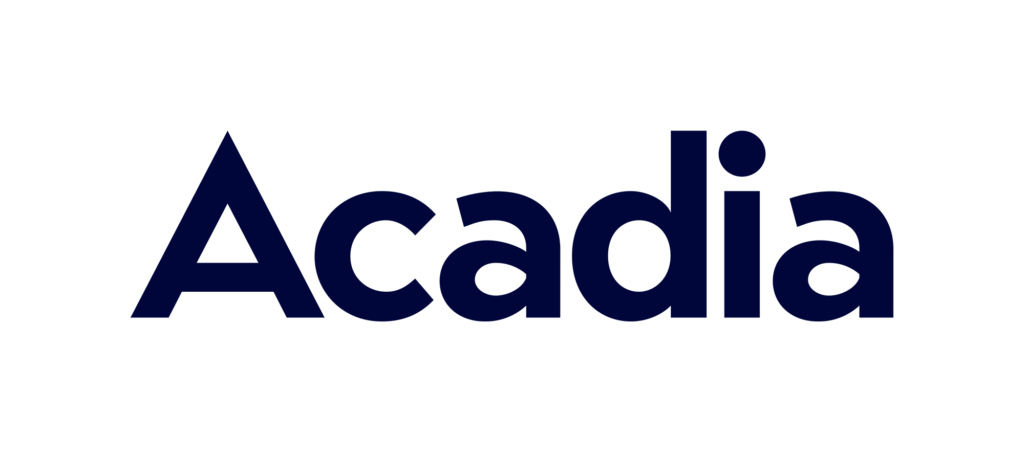Running promotions on Amazon can either unlock massive sales velocity or quietly erode your margins.
With dozens of promotional levers to pull, the challenge for brands isn’t whether to run promos. It’s which ones to choose, when to deploy them, and how to maximize their impact without overspending.
This guide breaks down the Amazon promotions that actually work, from high-visibility tools like Coupons and Prime Exclusive Discounts (PEDs), to more nuanced options like Brand Tailored Promotions and Customer Journey Analytics.
You’ll get tactical recommendations based on Acadia’s hands-on work with hundreds of brands and the data behind what really drives sales during everyday shopping cycles and high-stakes events like Prime Day.
Let’s cut through the clutter and help you run promotions that move the needle and protect your bottom line.
Amazon Promotions Overview
Every type of Amazon Promotion can have its moment in the sun.
It’s important to understand the differences between them. That way, you can make an informed decision about which to use in each situation.
Lightning Deals /7-Day Deals
- Deals are limited-time discounts
- Lightning Deals run for 4-6 Hours vs 7-Day deals, which run for a week
- Best Deals are longer-duration promotions (up to 2 weeks) that feature a discounted price and a "Best Deal" badge on your product detail page. These deals are shown in Amazon’s Today’s Deals section alongside Lightning and 7-Day Deals.
- They all appear on the Amazon Deals page, which is one of the most highly trafficked parts of the entire marketplace
- Only certain products are eligible - on Seller Central, you have to be invited to take part in a Deal
- Lightning Deals will cost $70 per day + 1% of sales (capped at $2,000), Best Deals will cost $70 per day + 1% of sales (capped at $2,000)
- Prime-Exclusive Lightning Deals with a discount of 40% off or more are eligible to be included in additional placements - there is nothing specifying what these "special" placements are.
- Deals are fantastic for generating Brand Awareness - you are almost guaranteed to generate a lot of traffic, but this doesn’t necessarily translate into conversions
Takeaway: Deals are generally better suited to established brands. Sellers just starting out should generally look at other promotional options.
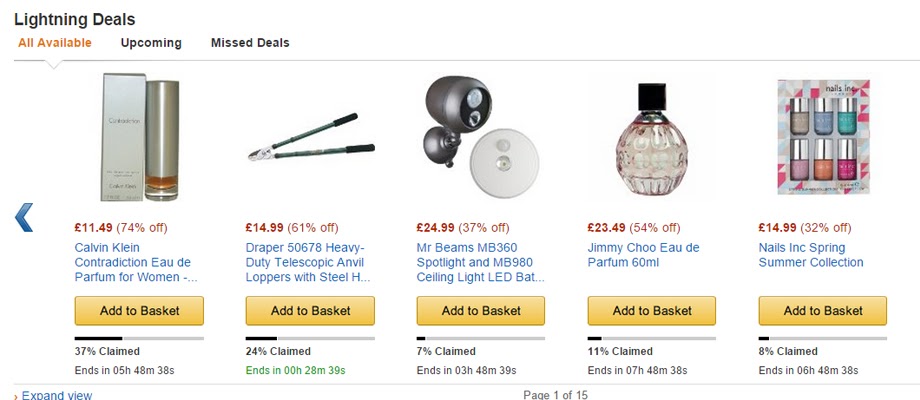
Above: Screenshot from the Amazon Deals page.
Percent-Off Promos
- Set up a limited-time promotion offer or provide a code that customers can enter at checkout to receive a discount
- Both the Promo Offer and the Codes appear below the fold on the product detail page (not that easy for customers to find)
- Percent-off promos are free to run and easy to set up
- You can choose either a dollar amount or a percentage off
- You can use Advanced options to set up a promotion with a tiered discount structure. This allows you to upsell the customer e.g. Buy One Get 10% on the Second Item
- The main challenge is that the percent-off promos don’t show very prominently on the product detail page
- Amazon also doesn’t make it easy for customers to redeem a percent-off discount
Takeaway: Percent-off promos are good if you are trying to move excess inventory in a short amount of time.
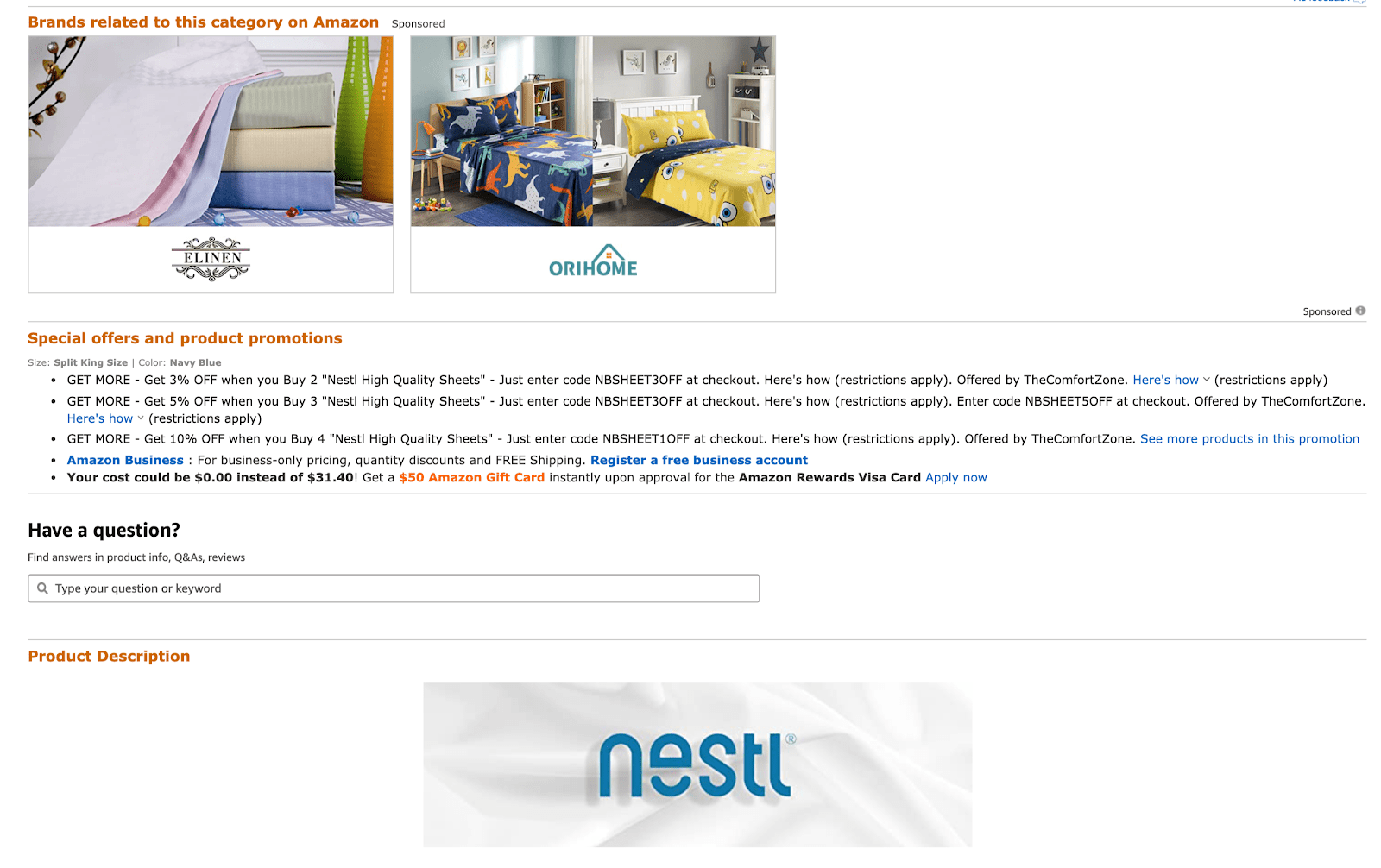
Above: Percent-off promos appear below the fold on the product detail page.
Social Media Promo Codes
- A percent-off discount is automatically applied through a custom URL that brands share on social media
- You can bundle complimentary products together - there can be multiple eligible items for a single social media promo
- This promo is only really useful for brands with a sizeable social media following
- You are also not attracting any potential customers already inside Amazon who are, in theory, closer to making a purchase vs your followers browsing social media
Takeaway: Useful for cross-promos on social media and capturing new customers more likely to purchase on Amazon vs your own ecommerce store, especially if a discount is automatically applied.
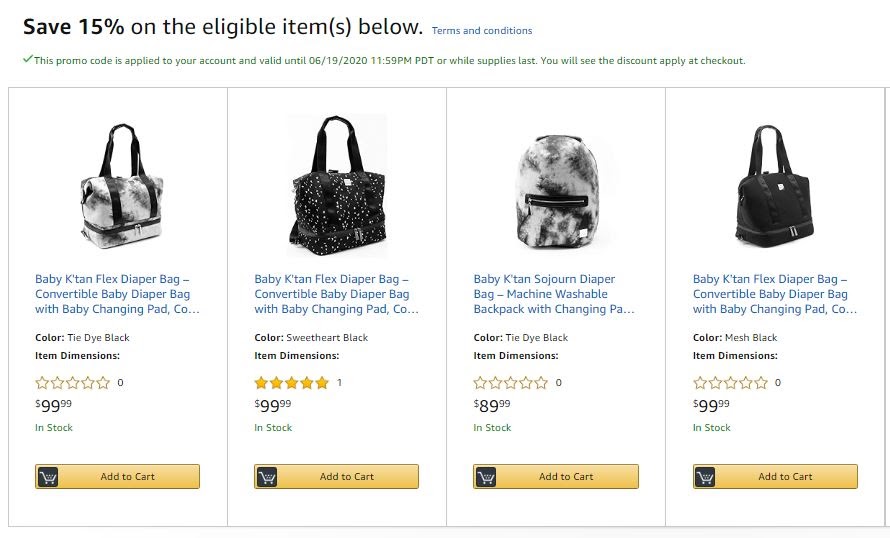
Above: Multiple items can be eligible for the same social media promo code.
Coupons
- Discount tool with a finite lifespan
- Easy to set up and great visibility - coupons appear prominently on the product display page, the search results page, and Amazon Coupons page
- Seller dictates the coupon budget - it will end automatically when 95% of the budget has been depleted
- The cost to run a coupon is $5 per coupon + 2.5% of sales
- Because coupons appear on the search results page, expect an increase in traffic and conversion rate
- If you don’t own the Buy Box, the coupon won’t show on the Product Page - the customer will need to select your offer to redeem the coupon
- Need an average product rating of 3.5 stars or more, so coupons aren’t good for brand-new products
Takeaway: Officially the team’s favorite promotional tool!
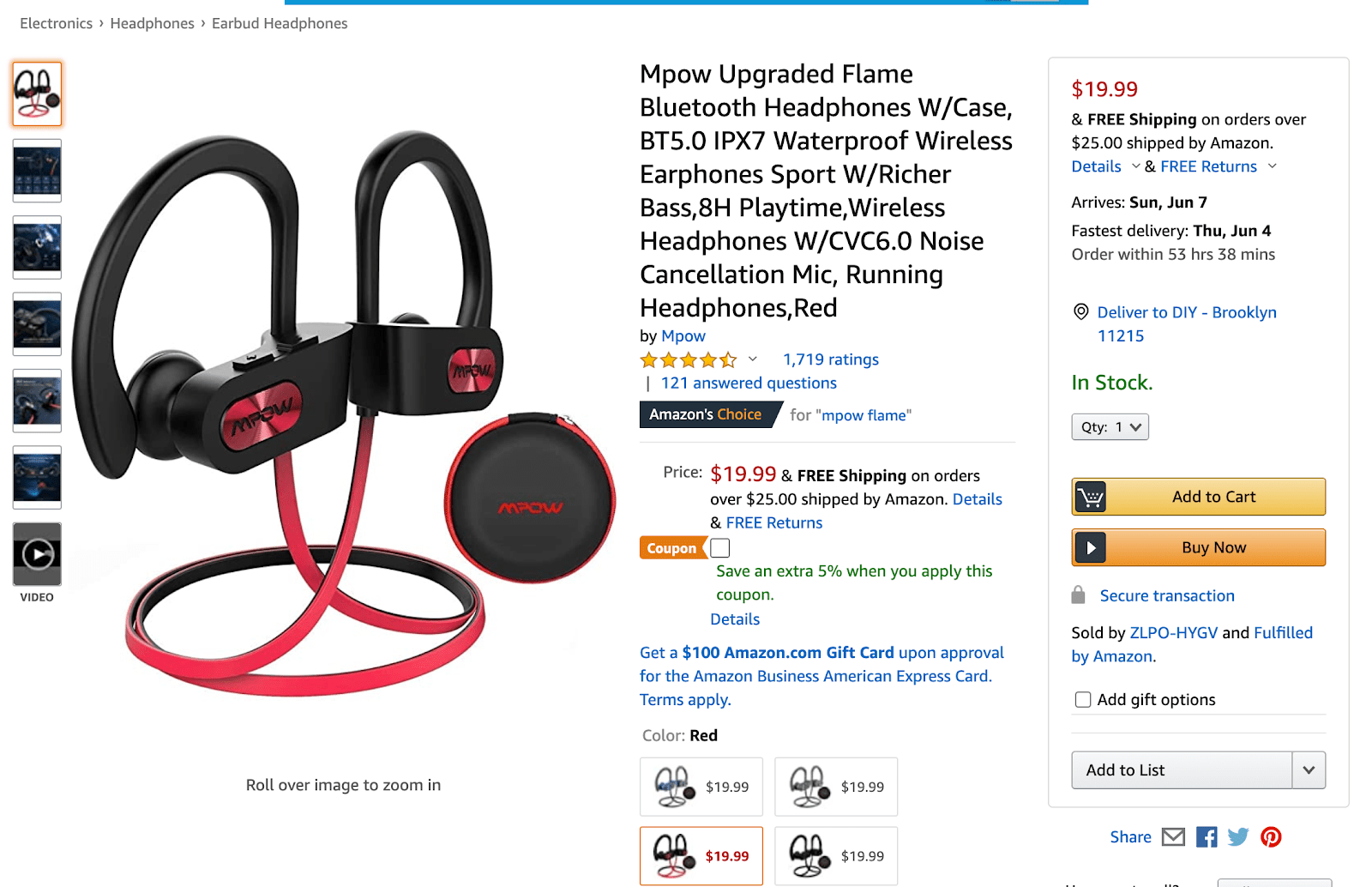
Above: Coupon tags appear prominently on the product detail page.
Prime Exclusive Discount
- In 2025, Prime Day will be extended to a 4-day event
- Prime members will be able to buy your product at a discounted price
- Free to set up, no invitation required, only valid for Prime members
- PEDs for PD 2025: Doubled from $50, reaching $100 per PED
- Minimum discount is 10% or 20% for the total products
- Prime-Exclusive Best Deals and Prime-Exclusive Lightning Deals with a discount of 40% off or more are eligible to be included in additional placements (though Amazon hasn’t clarified exactly what these are)
- Obviously, only valid for Prime members - if your niche attracts a lot of non-Prime members, this will hurt redemptions
Takeaway: Don’t expect to see a huge bump in sales - Prime exclusive discounts are more of a marketing tool for Amazon.
Last, But Definitely Not Least: Brand Tailored Promotions
- Offer exclusive discounts to customers who follow or have previously purchased from a brand.
- Target your promotions more precisely by creating granular audience segments based on shopper behaviors, including products they’ve viewed or shown interest in.
- Leverage advanced audience types like In-Market Shoppers and Complementary Product Remarketing to expand your reach beyond existing customers and engage high-intent shoppers across the Amazon Store.
- They will appear on search and detail pages, promotion shopping page, as well as on the Brand Stores page. In addition, the promo will be surfaced with a green badge.
- Products with no reviews are eligible. Products with reviews must meet the following criteria: Products with 1-4 reviews must have an average rating of 2.5 stars, and products with 5+ reviews must have an average rating of at least 3 stars. In addition, all products must be “New”.
- There is no fee for offering a Brand Tailored promotion.
- There is a minimum budget you must set: (average order value for your brand x percent discount x number of customers in selected audience x redemption percentage)
- You can customize promotions for specific audience segments. For example, selecting Repeat Customers will target only those who have made more than one purchase from your brand within the past 12 months from the date the promotion is created.
- You can create tailored promotions only for an audience size of 1,000 or more.
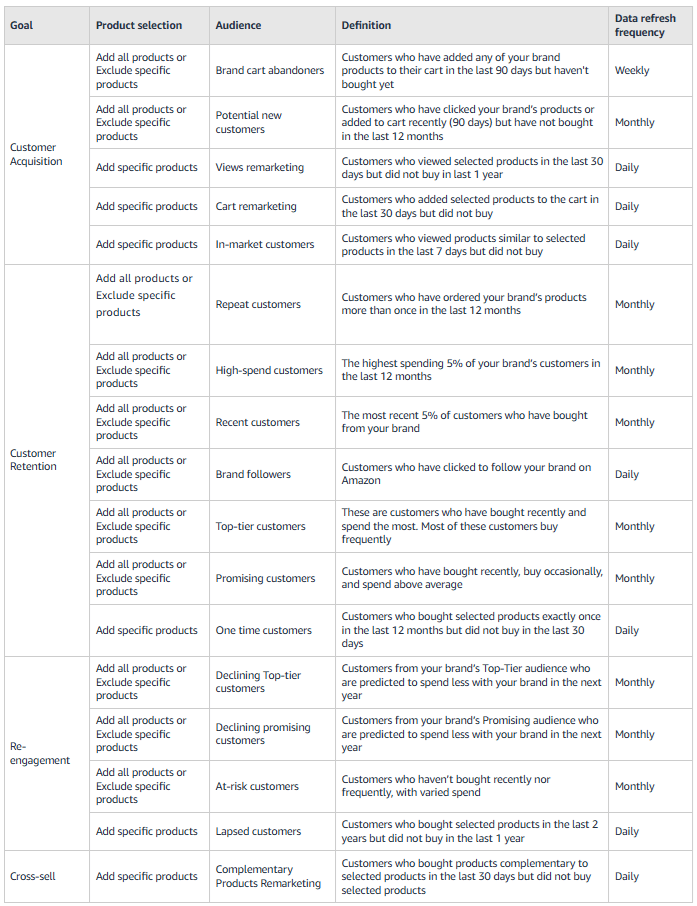
- There is a promotion cap: You can run up to 20 active or scheduled Brand Tailored Promotions at a time. To make the most of this limit, consider combining multiple ASINs into a single promotion when targeting the same audience. This allows you to maximize reach while staying within the 20-promotion cap.
Why Does The Acadia Team Love Coupons So Much?
Two main reasons: visibility and control.
In respect to visibility, Coupons appear on the search results page. They help your product stand out from similar products that are priced normally. Your coupons are also visible in any advertising tied to the promoted products and on the Amazon Coupons Page. Coupons appear in multiple locations on the product detail page itself, including right next to the Buy Box. So unlike other promos, it’s hard for customers to ignore them.
On the control side of things, with Coupons, you know exactly how much you will spend before the promo starts. At Acadia, we always recommend that brands invest in some level of PPC advertising. Your PPC spend is always going to fluctuate because it’s linked to market forces. This is not the case with Coupons. You control the Coupon discount and the total budget for the entire promotion. This is great for all brands, but especially helpful for those with very tight profit margins.
Best Promotions for Tentpole Events
Promotions matter, but not all promos are created equal.
Based on our client data, the type of promotion you run during tentpole events can drastically impact sales velocity:
📈 Sales Lift by Promotion Type
- Coupons: +1.65x sales lift on average
(A solid baseline boost — especially when paired with ads) - Prime Exclusive Discounts (PEDs): +5.5x sales lift on average (PEDs dominate during Prime Day thanks to visibility and trust from the badge
Takeaway: If you’re deciding between a Coupon and a PED — go PED for Tentpole Events.
New in 2025: Customer Journey Analytics
Amazon has introduced a powerful new Customer Journey Analytics report within Brand Analytics, designed to deepen our understanding of shopper behavior and enhance full-funnel optimization.
This report brings several impactful new metrics, including Branded Search Ratio, Consideration Customers, High-Potential Customers, Intent Customers, and the Top Three ASINs by Funnel Stage, providing a richer view of how customers engage with your brand throughout their journey.
Key highlights of the report include:
Sales Funnel Stages: The report is structured around the key stages of the purchase funnel: Awareness, Consideration, Intent, and Purchase. This segmentation helps us pinpoint which search terms and tactics are most effective at each stage, particularly in surfacing high-intent keywords.
Graphical Journey Mapping: A standout feature is the visual journey map, which shows:
- How customers initiate their search, whether from a broad category or with branded terms
- Who advances to product detail pages or visits the brand store
- Which actions they take next, such as adding to cart or saving items for later
- Behavior differences between one-time purchasers and repeat customers
Recommended Actions Integration: One of the most valuable features is the Recommended Actions tab, which integrates directly with Brand Tailored Promotions. This allows us to take immediate, targeted action based on where shoppers are in their journey, making it easier than ever to reach the right audience with the right message.
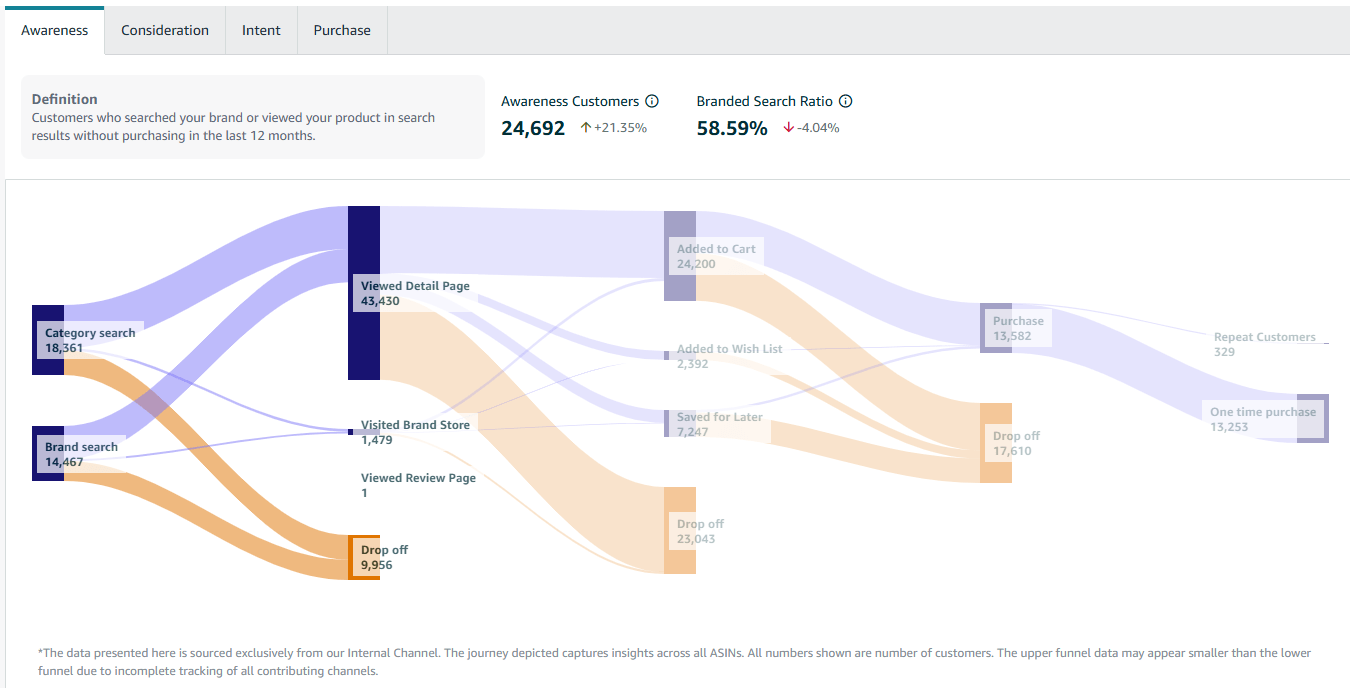
Amazon Promotions For New Products?
Promotions are generally designed to help products that are already up and running.
Some promos are invite-only, others need a minimum number of product reviews, so you can’t rely on Promotions to jumpstart traction for brand-new products.
It’s important to ensure new listings are professionally optimized for organic search traffic and on-page conversion. You should also consider Amazon’s Review Programs, like Vine and the Early Reviewer Program, for those crucial first product reviews.
Additionally, Brand Registered sellers can go a step further and organize Amazon Livestream around their new product or create Amazon Posts to educate potential customers about the new product.
Final Thoughts: Promotions That Perform and Pay Off
Amazon promotions aren’t one-size-fits-all. The most successful brands today treat them as precision tools, not blunt instruments, selecting the right promo type based on product lifecycle stage, margin profile, audience intent, and event timing.
Whether you’re looking to boost visibility, accelerate conversions during Prime Day, or re-engage loyal customers with a tailored offer, your promotional strategy should be just as optimized as your advertising and content.
At Acadia, we combine data, strategy, and deep Amazon channel expertise to help brands cut through the noise and run promotions that actually move product profitably.
📩 Want to build a smarter promotions roadmap? Let’s talk.
